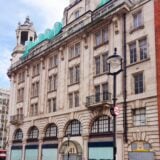This boosted the overall proportion of purchases made in cash, according to the latest London Property Monitor report from estate agent Marsh & Parsons.
Accounting for 36% of all sales from January to March, buy to let investors were the most prolific type of buyer across the prime London market in the three months immediately preceding the 01 April implementation of an additional 3% stamp duty on additional homes.
This represents a significant rise from 26% of purchases during the previous quarter, and a sudden reversal of the recent trend of weakening investor influence. Investor share of the market has been in slow decline last year since it peaked at 37% in the fourth quarter of 2014.
Those purchasing an additional residence became the second most prominent type of buyer in the prime London sector during the first quarter of 2016. This buyer group saw an even bigger jump in market share quarter on quarter, with second home owners accounting for 23% of all purchases, up from just 14% in the fourth quarter of 2015.
Together, buy to let investors and second home owners accounted for 59% of all purchases in the prime London market in the first quarter of 2016 and in the prime central London market it was even higher at 76%.
The research also shows that second home owners overtook investors as the most common type of buyer witnessed in prime central London during the first quarter of the year. Some 41% of all property purchases were made by those buying an additional residence, a significant leap from 24% in the final quarter of 2015. Property investors also seeking to circumvent the extra 3% levy accounted for a further 35% of property sales.
This preponderance of second home owners and buy to let investors has translated into a much higher proportion of cash purchases in the prime London market. Some 40% of property purchases were made by cash buyers in the first three months of the year, an increase from 34% in the previous quarter and up 36% year on year. In Prime central London areas this rose to 46%.
‘Investors will always be the stalwarts of the prime London property market as it’s the golden goose of capital returns. But second home owners were much more prominent in the market than we would typically expect,’ said David Brown, chief executive officer of Marsh & Parsons.
But he pointed out that this was by no means a typical quarter and sales activity in the opening three months of this year has been exceptionally skewed by the additional layer of stamp duty for both buy to let and second home purchases.
‘Naturally, the knee jerk reaction among these groups has been to hurry through property purchases before the deadline, and make savings while they can. Now that the ruckus has passed, we’ll see much more orderly transactions over the summer months, as the market rebalances towards first time buyers and other owner occupiers for whom it will just be business as usual,’ he added.
The report shows that overall in the past 12 months, buyer demand has jumped 9% across all of the prime London market, taking the ratio of registered buyers for every available property for sale to 14. Competition has increased up on both a quarterly and annual basis, increasing from 13 buyers to every property on the market in the fourth quarter of 2015, and 12 in the first quarter of 2015.
But rates of supply and demand are moving in vastly divergent directions across the capital. In outer prime areas of London, buyer demand has soared by 19% since March 2015, while in prime central London this has fallen by 4% over the same 12 month period. Similarly, the supply of homes for sale in outer prime London has dropped 12% year on year, whilst supply has climbed 11% in more exclusive prime central London.
The report says that due to the severe mismatch between supply and demand, outer prime parts of London are seeing the highest levels of competition across the capital with on average 16 registered buyers vying for every property for sale during the first quarter, an acceleration from 12 a year ago. In hotspots such as Balham, the number of applicants for every available property rises to 21.
This fierce demand has driven a significant growth spurt in outer prime London, greatly outstripping the price growth witnessed in other parts of the capital on both a quarterly and annual basis. In Balham, for example, average property prices are showing a 7.2% improvement on the first quarter of 2015, and have soared 3.4% in just three months.
Average house prices in outer prime London overall are up 2.9% year on year following a 0.5% jump since the fourth quarter of 2015 and outperforming the rest of capital.
Brown said that there is still a significant price premium to be paid for living in the central area of London which mean that first time buyers and young professionals are increasingly looking to outer prime London areas to buy. ‘These are the places where they can afford bigger properties that offer them room to grow, and for savvy investors, these are the places where prices still have room to grow too,’ he added.




